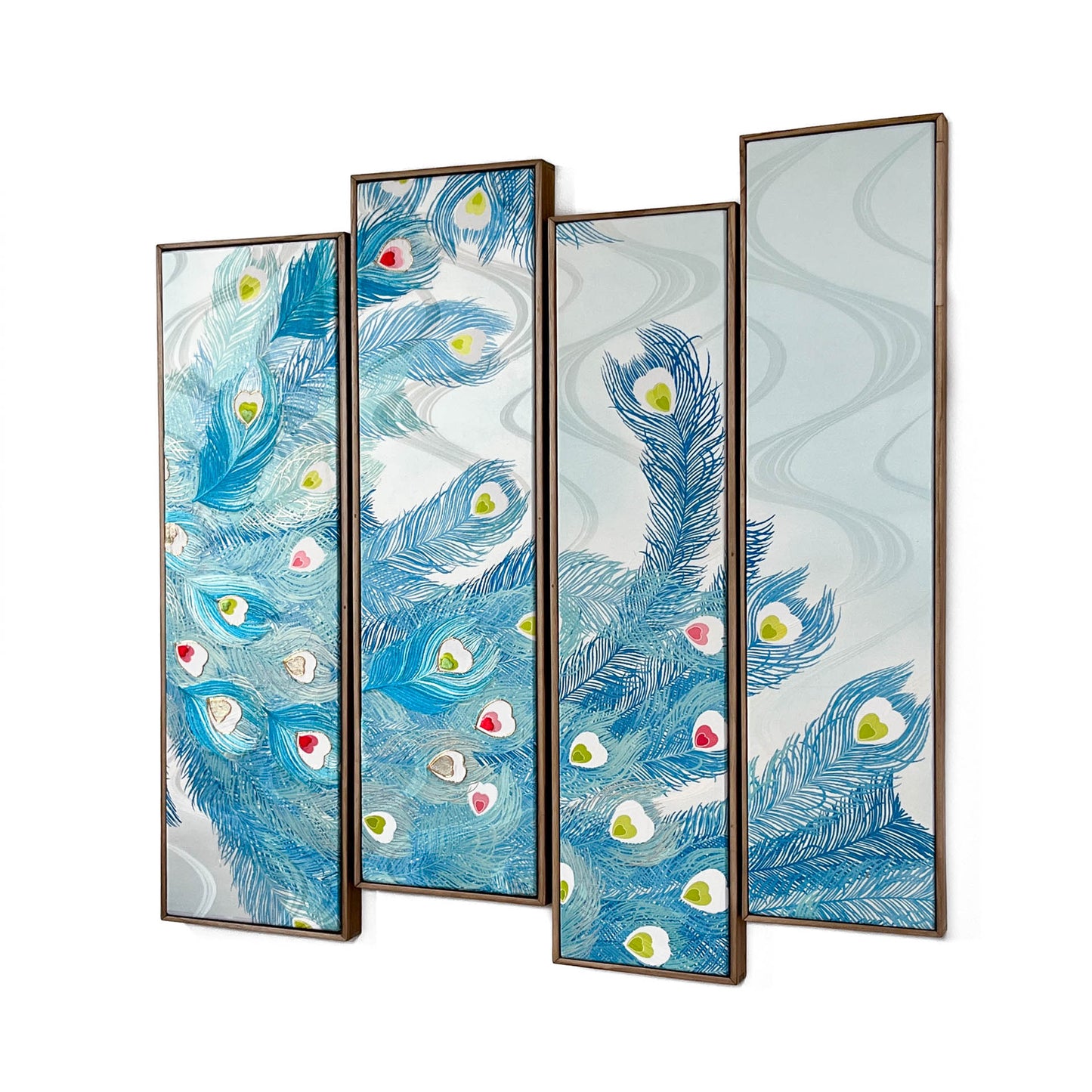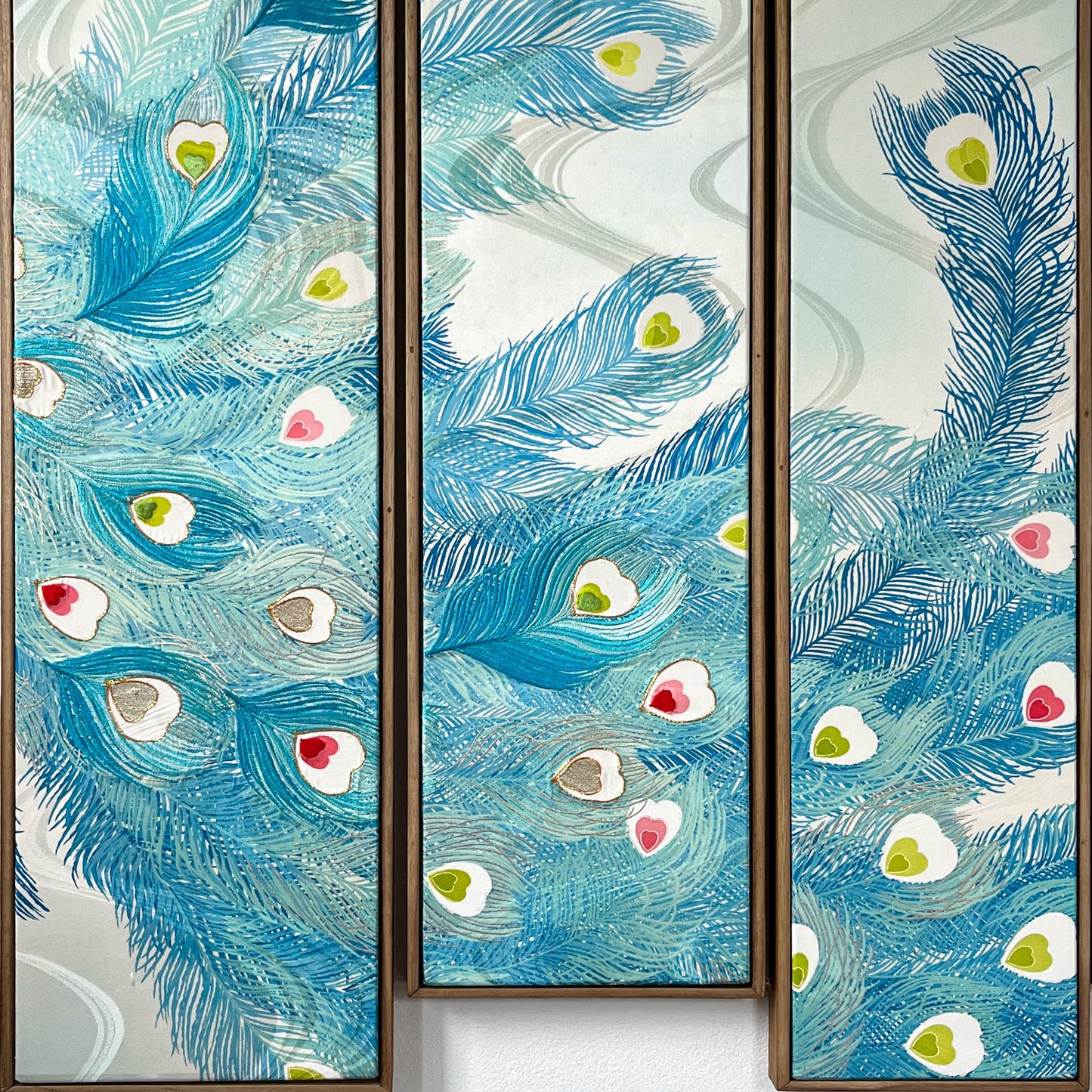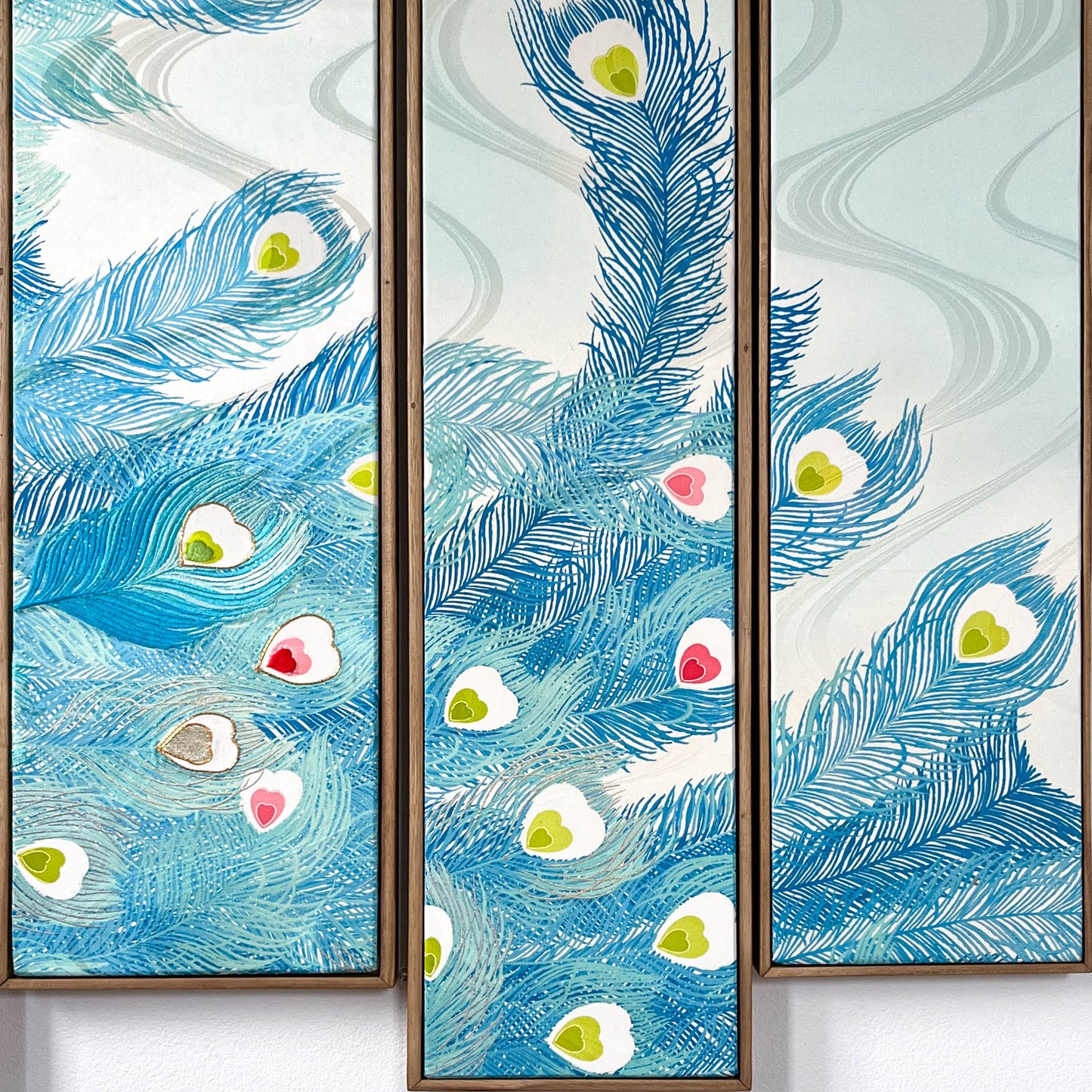Peacock Feathers ~Royalty~
Peacock Feathers ~Royalty~
Verfügbarkeit für Abholungen konnte nicht geladen werden
Size
approx. 90cm x 100cm x 4cm
Materials
silk (outside-layer) , paulownia (wooden frame) , beaten gold, golden, silver threads
Story behind the work
This work uses an antique furisode (festive kind of kimono with long sleeves) with peacock feathers - a symbol of royalty and prosperity. Can be used both vertically and horizontally.
It is elegantly framed with paulownia wood originally used for kimono chest-of-drawers, and is filled with storytelling and sense of luxury.
I used pieces of kimono that could no longer be used as clothing and kiritansu chest-of-drawers that would normally be discarded to create the ultimate upcycled piece.
Period / Story
This artworks uses textile dated early 20th century, around 1920ies.
Explanation of colors and patterns
In Japanese traditional culture, peacock feathers carry several meanings and symbolisms, reflecting both aesthetic appreciation and deeper spiritual significance:
・Beauty and Elegance: Peacock feathers are renowned for their striking colors and intricate patterns. In Japanese culture, they are admired for their beauty and elegance, often used in traditional arts and crafts to adorn clothing, accessories, and decorative items. The vibrant hues and graceful lines of peacock feathers symbolize refinement and aesthetic appreciation.
・Protection and Warding Off Evil: In some Japanese beliefs, peacock feathers are considered talismans for protection against evil spirits and misfortune. It's believed that the radiant eyespots on peacock feathers have the power to ward off negative energy and bring good luck to the bearer. As such, peacock feathers are sometimes displayed in homes to safeguard against malevolent forces.
・Spiritual Significance: Peacock is associated with spiritual purity and enlightenment. The iridescent colors of the peacock's plumage symbolize the transformation of negative qualities into positive virtues on the path to enlightenment.
・Royal and Imperial Symbolism: Historically, the peacock has been associated with royalty and nobility in various cultures, including Japan. In Japanese imperial symbolism, the peacock is considered a symbol of regal beauty, power, and authority. Peacock feathers may be depicted in imperial crests, emblems, and ceremonial regalia as a symbol of the imperial family's prestige and lineage.
・Rebirth and Renewal: In Japanese folklore and mythology, the peacock is sometimes associated with themes of rebirth and renewal. Its ability to shed and regrow its feathers is seen as a metaphor for transformation and regeneration. Peacock feathers may be used in rituals or celebrations marking significant life transitions, such as weddings, coming-of-age ceremonies, or New Year's festivities, to symbolize new beginnings and opportunities.
Overall, peacock feathers in Japanese traditional culture symbolize beauty, protection, spirituality, and royalty. Their presence in various aspects of Japanese art, folklore, underscores their enduring significance as symbols of cultural richness and spiritual resonance.
Characteristics of the fabric
The fabric is decorated with hand-painted yuzen - a traditional Japanese painting technique, and golden and silver threads intricate embroidery called "kinkoma" - also unique Japanese technique.
About the frame
Kiritansu - chest-of-drawers for kimono, is traditionally made from paulownia wood, a uniquely Japanese material closely tied to the world of kimonos.
Paulownia wood is known as the lightest wood in Japan, prased for its natural luster, resistance to moisture, and resilience against cracking. Since ancient times, it has been used in crafting furniture, chests, and musical instruments.
During the Edo period, it became customary to store cherished kimonos in paulownia chests, which offered fire resistance and protection from moisture and insects.
Traditionally, when a daughter was born, a paulownia tree would be planted. Upon her marriage, the tree would be cut down, and the wood would be used to craft a chest for her as a wedding gift.
Following the Ansei Earthquake during the late Edo period in 1855, paulownia chests gained popularity due to their ability to withstand fires and even float in water, thereby safeguarding their contents during floods.
I use antique kiritansu that can’t be used as furniture anymore to create basis and frames for my works. It adds them even more authentic atmosphere of traditional wabisabi spirit. Can you feel it?
Decoration Advice
Canvas can be displayed on a table, wall, etc. Hanging on a wall requires hooks, tacks or nails. It can also be displayed propped up on an easel. Ideal for a room makeover, housewarming gift, present, or souvenir for a loved one.
Precaution
All the works are made from real kimonos, antiques and vintages. For this reason, the fabric may have traces of long-term use and minor fabric damages. In case there are any scratches or stains, we always add a photo of the area on the item page, so please check before purchasing. Regarding precaution, cancellation and refund policy, please refer to the refund policy in the footer section of the site for information.






































